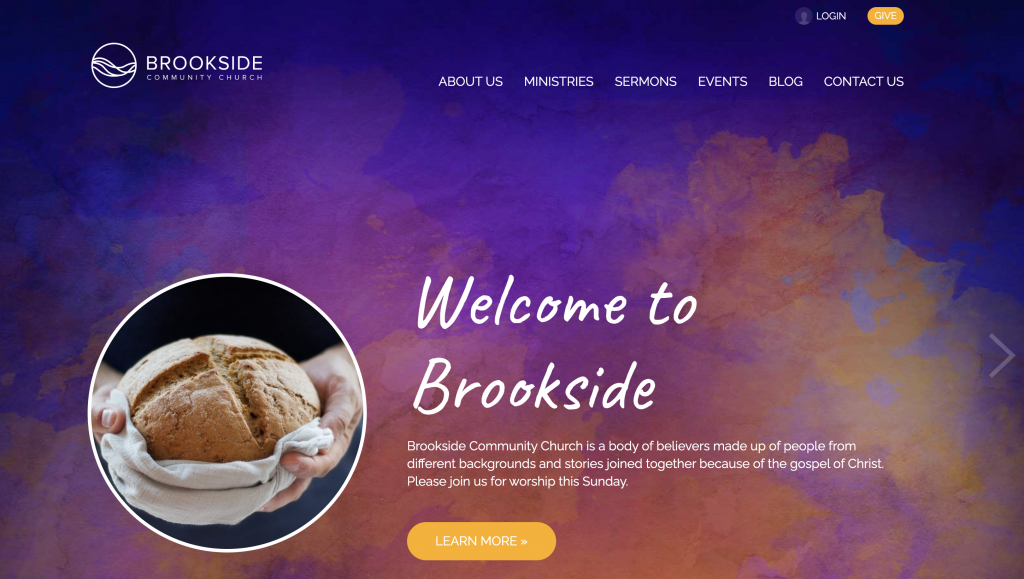It’s Time for a Church Website Strategy Refresh
A church website isn’t a one-time setup. This blog walks you through five questions every ministry should ask to see if their digital presence is still effective. If you’re not seeing growth, clarity, or engagement, it might be time for a refresh.
How to Know If Your Website Strategy Is Still Working
When was the last time you paused to review your church website with your leadership team? Not just to update a service time or swap out a photo—but to ask the bigger question: is our website still working for us?
A church website is more than a digital bulletin board. It shapes how visitors see your church, supports communication with your members, and plays a major role in how your community connects with your ministry. But over time, websites get cluttered, content becomes outdated, and next steps for guests get buried or lost completely.
That is why now is always a smart time to reevaluate. Whatever time of year it is, it is worth asking if your current site reflects your values, goals, and the people you are trying to reach. You may not need a full redesign, but you do need clarity.
This blog will walk you through five simple but important questions to help you audit your church website. Whether you are working with a basic template or using a more advanced platform, these questions will show you where to adjust, what to improve, and how to align your digital presence with your mission.
Let’s make sure your website is not just online—it’s actually helping your church move forward.
1. Does Your Homepage Clearly Communicate Who You Are?
Your homepage is the front door of your church website. For most guests, it is their first interaction with your church—long before they step into a service. That first impression forms quickly, and it either builds trust or creates confusion.
In those first few seconds, visitors should be able to identify your church’s name, location, service times, and what kind of experience they can expect. If they cannot find that information quickly, they are likely to leave and not return.
A homepage that is cluttered, outdated, or unclear can unintentionally push people away. It is not just about design—it is about communication. If a guest needs to scroll or click more than once to find out when and where you meet, that is already too many steps.
What to look for:
-
Is your header image or background welcoming and specific to your church (not just a stock photo)?
-
Are your service times and address listed near the top of the page?
-
Does your welcome message feel like it came from a real pastor or leader?
-
Are ministry priorities or values visually represented (not buried in a menu)?
A clear and engaging homepage increases trust and helps potential visitors feel seen, valued, and invited before they ever attend in person.
2. Are You Guiding Guests to a Clear Next Step?
Even a great-looking site can fall flat if it does not offer direction. Every page should guide the visitor to do something: plan a visit, attend an event, watch a sermon, or learn more. Without these prompts, people are left guessing.
A clear path builds momentum. When someone lands on your site, they are already curious. Your job is to show them how to take the next step with confidence. This is especially important for new guests who need simple, low-pressure ways to explore your church.
Make sure calls to action (CTAs) are not just included, but visible and consistent across the site. These actions should align with your ministry goals and serve both first-time guests and long-time members.
What to look for:
-
Is there a “Plan Your Visit” or “New Here” button on the homepage?
-
Are your CTAs placed near the top and bottom of key pages?
-
Do action buttons lead to clear, relevant pages (not just generic contact forms)?
-
Are there next steps available for both guests and members?
Clear direction and content increase engagement. People are more likely to take a step when that step is visible and feels meaningful.
3. Is Your Content Current and Actively Maintained?
A website with outdated content sends the wrong message. If your homepage features an Easter banner in July or your events page lists something from last fall, visitors may wonder if your church is still active.
Fresh, consistent content reflects a healthy ministry rhythm. It shows your community that your church is alive, organized, and paying attention. It also keeps members informed and invites guests into something current.
Review your pages monthly. Set calendar reminders to check key areas like sermons, events, and staff listings. These sections are easy to overlook but make a big difference in how your church is perceived.
With ChurchSpring’s Church Website Builder, staying updated is simple and fast. You can:
-
Upload sermons weekly with built-in sermon tools that support audio, video, and notes
-
Manage your event calendar in one place with start/end dates, descriptions, and images
-
Update your leadership and staff pages using drag-and-drop sections with photo and role fields
-
Swap out homepage banners instantly with real-time editing and preview features
Everything is built to make edits quick and accessible, even for non-technical volunteers. You can log in, make a change, and see it go live immediately—no coding or design tools required.
Questions to ask to check if your content is updated:
-
Do your sermon uploads follow a weekly pattern?
-
Are upcoming events actually in the future (not expired)?
-
Is your leadership or staff page up to date with correct names, roles, and photos?
-
Do your seasonal banners or home messages reflect current campaigns?
An updated website shows your church is present, intentional, and ready to serve the people visiting your site today—with ChurchSpring, it’s easy to stay current without added stress.
“Setting up our website was so easy, yet so powerful. My past experience in building a website was exhausting, but ChurchSpring has taken all the work and mystery out of the process.”
— Richard G., Crossroads Christian Fellowship
4. Is Your Website Easy to Navigate and Mobile-Friendly?
Most visitors will view your site on their phone first. If it is hard to navigate, loads slowly, or forces users to zoom in and out, they are unlikely to stay.
User experience matters. A clear menu structure, fast-loading pages, and readable text are all essential—not just preferences. They impact how people interact with your site and whether they will come back.
Do a mobile check with your leadership team. Visit your site on different devices and evaluate how easy it is to find service times, events, and sermons without pinching the screen or hunting through menus.
What to look for:
-
Do pages load in under 3 seconds on mobile networks?
-
Is the navigation bar responsive and consistent across all pages?
-
Are fonts easy to read without zooming in?
-
Are photos and buttons sized correctly for small screens?
A clean, mobile-optimized site helps you reach more people where they are—on their phones, in real time, and often on the go.
5. Is Your Website Supporting Your Ministry Goals?
A website is not just a place for information—it should actively support the mission of your church. This includes welcoming guests, communicating events, sharing the gospel, encouraging giving, and supporting discipleship.
If your current site creates friction or requires outside help just to post an event, it is working against you. Your digital tools should serve your ministry, not slow it down.
Evaluate how your team uses the site weekly. Are you constantly emailing a designer to make updates? Do you struggle to keep announcements visible? A strong platform will allow your staff or volunteers to make updates without needing technical training.
What to look for:
-
Can your staff or volunteers update events and sermons easily?
-
Does the site promote upcoming ministries, signups, and giving opportunities?
-
Are there areas of the site that never get used or updated?
-
Is the site reducing the number of questions people call or email about?
Your website should function as a ministry assistant—always available, always current, and always aligned with your mission.
What Makes the Strategy Shift Easy?
Rethinking your church website strategy doesn’t mean rebuilding everything from the ground up. In fact, most churches don’t need a full redesign—they need the right tools to realign their content, structure, and goals. That’s where a user-friendly platform like ChurchSpring’s Church Website Builder makes all the difference.
You don’t need to hire a developer or spend weeks learning complicated systems. With ChurchSpring, your team can refresh your site in a way that’s fast, intuitive, and built for ministry.
Here’s how:
-
Templates created for churches – Skip the guesswork. Choose from designs that already include the core pages churches need, like sermons, events, and ministries.
-
Built-in features for digital ministry – Upload weekly sermons, share upcoming events, accept online giving, and post prayer needs—all from one central dashboard.
-
Live preview editing – Make updates with confidence. You’ll see changes as you type, so there’s no need to click through multiple steps or wait to view results.
-
Mobile responsiveness included – Every page automatically adjusts to fit any screen, giving your visitors a seamless experience whether they’re on a phone, tablet, or desktop.
-
Website and app integration – When you update your website, those changes automatically reflect on your connected ChurchSpring app. Events, sermons, and announcements stay consistent everywhere without extra steps.
“ChurchSpring has been such a blessing to our ministry!! Our website is easy to navigate, visually appealing, and current!! We appreciate all the updated features as well. We know ChurchSpring is working to keep us relevant!”
— Madeline C., Fellowship Bible Church
Everything is designed to help your team focus on real ministry instead of technical details. From visual updates to ongoing content changes, your staff or volunteers can keep things current without needing special training or outside support.
When your tools are built for churches, updating your site becomes a joy—not a burden. It’s easier to stay aligned with your mission and keep your digital presence fresh, clear, and inviting.
Try ChurchSpring free for 7 days or join our next demo webinar to see how the Website Builder can help your church optimize your online presence, streamline communication, and make websites more welcoming with less effort and more impact.







